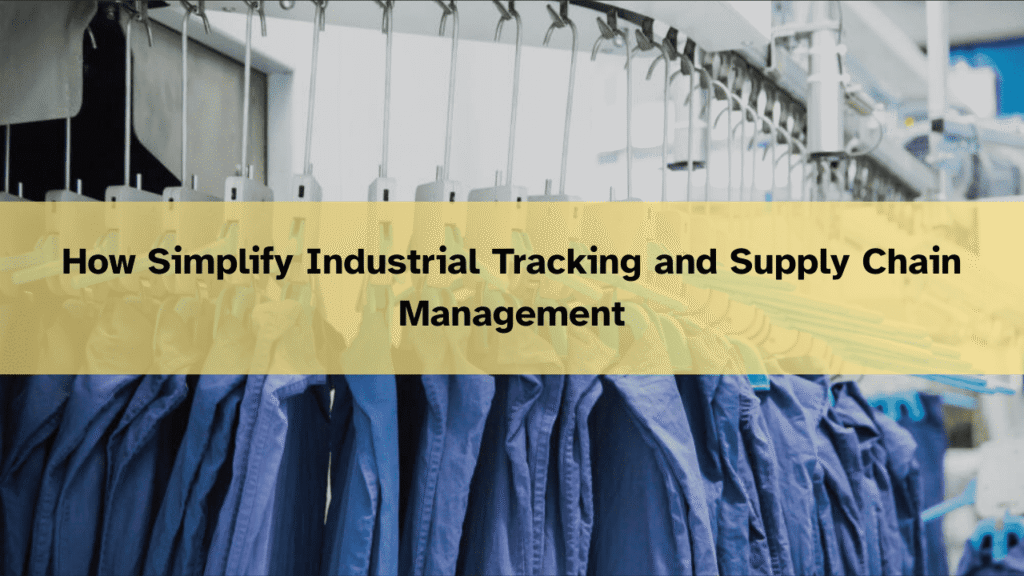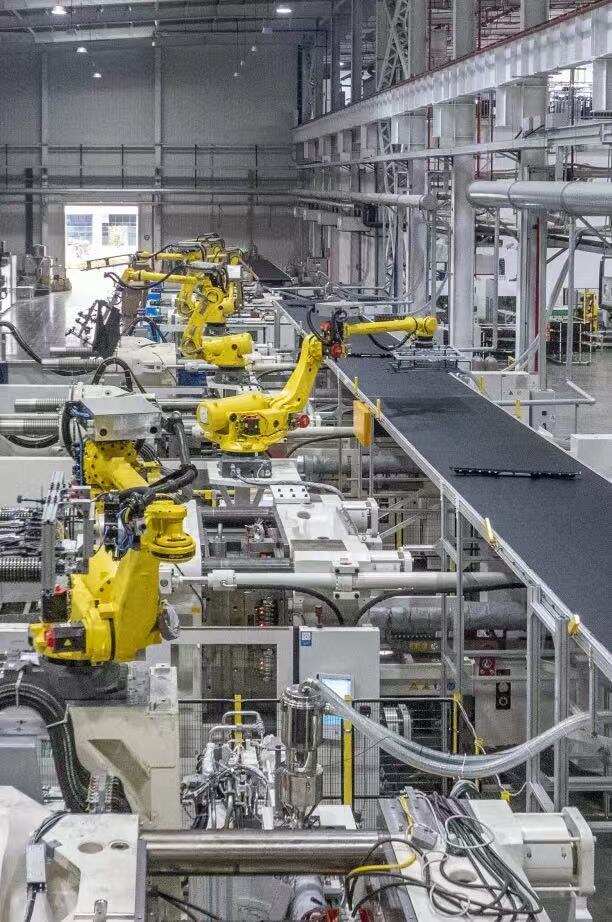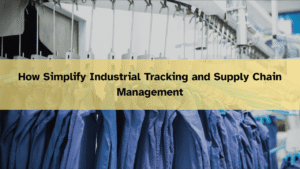
How Simplify Industrial Tracking and Supply Chain Management
RFID Tags: The New Engine of Industrial Intelligence Upgrade — From Cast Part Tracking to End-to-End Supply Chain Transparency

RFID Tags: The New Engine of Industrial Intelligence Upgrade — From Cast Part Tracking to End-to-End Supply Chain Transparency
Global manufacturing is undergoing a profound transformation—what we commonly refer to as “Industry 4.0.” Achieving more intelligent, transparent, efficient, and traceable production is now essential for manufacturers seeking to upgrade and compete globally. RFID (Radio Frequency Identification) technology, and particularly the ubiquitous RFID tag, is emerging as a key driving force in this revolution.
As a professional company specializing in RFID tag design solution, we value not only the craftsmanship and performance of our products, but also their immense practical value in diverse industrial scenarios. Today, using “tracking of cast part processing and smart workshop management” as our entry point, we’ll explore how RFID tags are being applied in heavy industry, high-end manufacturing, and precision engineering—and how they are empowering factories with end-to-end transparency and digital-driven transformation.
Part 1: RFID Technology Basics — The “Smart Chip” of Industrial Traceability
1.1 RFID Tag: How It Works
RFID (Radio Frequency Identification) technology enables non-contact identification using electromagnetic waves. The core carrier—the RFID tag—acts as a miniature data storage device. It can contain unique identification numbers (UID), product parameters, production batch numbers, process status, delivery information, and more.
Compared to traditional identification methods such as QR codes or paper documents, RFID tags offer significant advantages:
- Non-contact, high-speed batch reading: No need for manual scanning; RFID enables simultaneous quick reading of multiple tags, boosting line efficiency.
- Writable and dynamically updatable data: Each production step’s data can be recorded in real time, building a complete processing history.
- High durability: Industrial-grade tags withstand oil, moisture, heat, and dust—ideal for complex workshop environments.
- High stability and low error rates: Special anti-metal and anti-interference designs greatly reduce misreads, ensuring secure and accurate data.
- Long-range identification and easy automation integration: Supports automated control in environments that require distance and speed.
This is why RFID tags have become the digital foundation of the Industrial Internet of Things (IIoT) for smart factories.
Part 2: How RFID Empowers the Industrial Production Process
The first step in the digital transformation of manufacturing is often visualization and traceability. Take metal machining or cast part processing as an example—consider these common pain points:
- Multiple process steps, high risk of part mix-up and misidentification
- Poor real-time information flow, low efficiency
- Lack of transparency in process quality and data management
- Increasingly strict compliance and traceability standards (ISO/TS, IATF, AS, etc.)
- Difficulty managing fixtures, tools, and inventory; inaccurate stocks
Compared to traditional paper records, manual entry, or barcode methods, RFID tagging offers a new paradigm:
2.1 The Digital Guardian of Data Flow
- Tag-on-login: Each part receives a unique RFID tag before entering production, storing order, material, and part-specific information.
- Automatic data collection at each station: As the part moves through each process, the RFID tag is automatically read, and new data recorded—by the PLC system and integrated into the MES or ERP.
- Transparent production progress: Each part’s current process, status, and progress are visible in real time. Any abnormality is immediately reported for quick intervention.
- Integrated with end equipment: Machine tools, robots, and AGVs readily connect with RFID data, enabling seamless system collaboration and traceability.
2.2 Typical RFID Application Process (Machining Example)
- Inbound & Sorting: On arrival, each casting is labeled and instantly recorded in ERP.
- Process Tracking: Each machining and inspection step updates the tag with operator, parameters, results, and time.
- Automated Sorting & Loading: Conveyors and AGVs use RFID for automatic part transfer.
- Bad Product Isolation: Failed parts are auto-flagged by system, reducing manual errors.
- End-to-End Records: Complete manufacturing records and certificates are generated for lifetime tracking and customer reference.
2.3 Extended Value in Smart Manufacturing
- Flexible, multi-order, and mixed production: Part lifecycle is digitally recorded for agile production task switching.
- Tool management: RFID assists in lifetime tool tracking (wear, replacement, maintenance), improving utilization.
- Quality compliance and liability: Quickly isolate affected batches and trace operator responsibility, accelerating recalls or corrections.
Supply chain collaboration: Connect suppliers, subcontractors, warehousing, and logistics—boosting inventory accuracy and anti-counterfeit capabilities.
Part 3: RFID in Action — Industrial Applications & Pioneer Cases
RFID’s applications have extended far beyond just manufacturing. Here are select industry highlights to illustrate its enormous potential.
3.1 Automotive Manufacturing — “One ID per Part” and Smart Line Awareness
Case A: Full-Process Traceability for Engine Blocks
- Each engine block is tagged right after casting, data linked to the MES.
- Through machining, QA, pressure testing, cleaning, and more, each step’s data is auto-collected into the tag.
- In case of later quality incidents, tracebacks pinpoint batch, production time, operators, and machine settings in seconds, slashing recall costs.
- RFID on pallets and AGVs allows full-vehicle manufacturing data integration.
Case B: Mixed-Model Assembly
- Chassis, wiring, seats, airbags, etc., are all RFID-tracked so robots verify correct part installation, preventing mix-ups.
- Special parts (e.g., batteries, airbags) are individually managed by RFID to prevent fakes and inventory errors.
3.2 Aerospace — “Atomic-Level” Traceability for Critical Parts
- High-value parts (fan blades, hydraulics, sensors) use micro-sized, high-temp/specialty RFID tags to maintain tracking even in the harshest conditions.
- In maintenance, RFID records replacements, checks, usage time—making spares management truly secure.
- Specialized tools (precision measuring equipment, etc.) with RFID enforce borrowing/return permissions, reducing human error.
3.3 Heavy Equipment — End-to-End Transparency & Aftermarket Support
- Excavator arms, bulldozer blades, mining truck chassis, etc., use industrial-strength RFID tags for batch, QA, welding, paint, and more.
- Spare parts and service tracking are more efficient, enabling “precision warranty” and boosting customer trust.
3.4 Precision Electronics — From PCB to Assembly, Smarter Than Ever
- PCBs and modules are tagged at the start; all subsequent tasks (test, burn-in, pick & place, inspection, packing) are recorded.
- At each QA/testing step, the system automatically determines accept/reject, minimizing manual management.
- High-value devices use RFID for service and warranty, quickly identifying aging, faults, returns—boosting customer satisfaction.
3.5 Medical Devices & Pharmaceuticals — Safety and Regulatory Compliance
- Implants, surgical tools, packaging, etc., use anti-counterfeit and highly reliable tags, closing the loop from manufacture to application.
- Pharmaceuticals and consumables: Each item ID tracks production, inspection, logistics—meeting GDPMD, FDA, and other regulatory standards.
- In labs, tagged reagents and trays automate expiry and consumption alerts.
3.6 Energy, New Materials, and More
- Wind, nuclear, compressors: Large, critical parts use RFID for production, acceptance, and maintenance.
- Batteries, solar panels, composites: RFID enables transparent tracking and lifecycle management.
Part 4: How to Select the Right Industrial RFID Tag for Your Business?
4.1 Key Considerations
- Frequency: LF, HF, UHF—choose based on read range, metal interference, and production needs.
- Packaging: Ceramic, metal, PCB, epoxy, etc.—match to your environment’s temperature, humidity, corrosion, impact.
- Temperature resistance: For foundry/hot work, choose tags rated for sustained 200°C+ exposure.
- Size & Mounting: Need tiny tags for tight spaces? Need screw, rivet, or adhesive mounting?
- Read/write performance: Fast lines need tags with anti-collision/multi-tag reading.
- Data security & capacity: Complex processes need higher-capacity, secure tags.
4.2 Typical Product Solutions
- Metal-cast RFID tags: High-temp, acid/alkali-resistant; fit for all metal and plastic castings.
- Pressure & water-resistant ceramic tags: Great for medical, sanitary, energy scenarios.
- Flexible sticker tags: Perfect for PCB, plastic, battery, and flat surfaces.
- Invisible rewritable tags: For high-end molds, tools, and fine part authentication.
4.3 FAQ for Procurement Managers
- Are RFID tags water/heat-resistant?
- Yes. Our tags can withstand -40°C to +200°C; dust/waterproof to IP68.
- What tags work with metals?
- Choose our metal-optimized tags—special anti-interference for reliable reading.
- Can tags be rewritten as the process continues?
- Yes, tags support repeated reads/writes and fully customizable data structures.
- Is the data safe? Could it be lost?
- RFID supports tamper-proof design; system-level cloud backup prevents data loss.
- Will tags fall off?
- No. Our tags use strong adhesives, screws, or embedment—the most robust bond.

Part 5: Rolling Out RFID — A Smooth Path to Transformation
- On-site Research & Needs Analysis
Visit workshops, understand workflows and automation, plan tag deployment strategies.
- Technical Selection & Solution Design
Tailor configurations to part material, environment, automation, and workflow complexity.
- System Integration
Seamless connection to your existing MES/ERP/PLC.
- Pilot & Optimization
Conduct pilot tests, debug data collection, and refine processes with your team.
- Full-scale Deployment
Volume rollout, technical training, and all-round after-sales support.
- Operations & Data Mining
Leverage data for advanced insights into bottlenecks, quality, and inventory—helping you optimize your operations.
Part 6: RFID in Industry — Looking Ahead
- Big Data & AI Analytics: RFID closes your digital loop, paving the way to AI-driven scheduling, predictive maintenance, smart logistics, and flexible supply chains.
- Industry Internet Integration: RFID tags as IoT nodes—connect machines, staff, material, customers, and suppliers for an integrated ecosystem.
- Green, Low-carbon Compliance: Automatic traceability boosts resource and energy transparency, simplifying ESG and regulatory reporting.
- Total Digital Twin: All product data mirrored for digital factory simulation, supporting future manufacturing upgrades.

Start Your Smart Manufacturing Journey with the Right RFID Tag
The future of manufacturing is transparent, digital, and intelligent. The humble RFID tag is, in fact, the “living barcode” at the heart of this revolution. With careful selection, proper system integration, and high-quality products, any manufacturer can harness the power of RFID for full-scale workshop and supply chain digitalization.
High-efficiency upgrades across all industries begin with RFID. We look forward to creating the future with you!
info@makarfid.com





